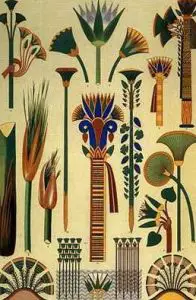Here are some facts for kids about ancient Egyptian plates:
In ancient Egypt, the rich ate the meat of many kinds, mostly cows, and sheep. Some priests related pigs with Set, an evil god, and made it so most people did not want to eat pigs. The rich ate off plates of gold, silver, faience, and bronze at a low table. People with less money ate off of earthenware plates.
Uses of Egyptian Plates
Plates used in ancient Egypt by the pharaohs and nobility were often made of gold, silver, and copper as well as alabaster, quartzite, and wood as wood was a scarce commodity in ancient Egypt. Plates and bowls made of African ebony and ivory drinking vessels have been excavated.

Besides the paintings, scholars also created a large collection of wrought metal plate reliefs. These proved to be an ideal medium to show in the old Egyptian style not only the persons of the past but also their attributes and symbols. The wrought metal plate reliefs are an excellent presentation of the ancient cultural details and could be used to educate future generations of Egyptologists, archaeologists, and historians.
Archery was a well-known sport in Ancient Egypt and was often recorded on plates in ancient temples. These plates show the kings’ and princes’ skill in accurate aiming at the target and their strength in pulling the bow.
Archery competitions were common. In the 21st century, BC King Amenhotep II boasted that he pierced the middle of a thick brass target with four arrows. He then set a prize for anyone who could do the same.
Also, Rowing was one of the sports that required most physical strength on the part of the ancient Egyptian. Plates recorded team-rowing in which the players depended on harmonizing their rowing according to the directives of their leader who held the rudder.
The leader also controlled their movement through a high-pitched systematic call to unify the moment when oars touched the surface of the water and that helped to push the boat forward more steadily and swiftly – a method still being adopted in rowing nowadays.
One of the ancient Egyptian plates at the “Marorika tomb” shows teams standing in two opposite rows, with the first players of each row holding hands and pulling back each other while the other members of each team hold each other tightly by the waist and try to pull back the opposite team. The first contestant in the front has one foot supported by that of his opposite number. This sport is still practiced in the Egyptian countryside
